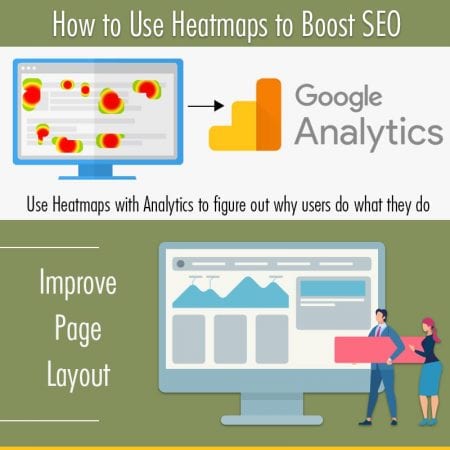 The use of heatmaps is essential in understanding how visitors interact with your website. They have become a must-have for digital marketers and can help them learn which images attract the most attention, or what catchphrases draw the biggest number of clicks to a page.
The use of heatmaps is essential in understanding how visitors interact with your website. They have become a must-have for digital marketers and can help them learn which images attract the most attention, or what catchphrases draw the biggest number of clicks to a page.
If you’re new to digital marketing and the somewhat complicated realm of SEO, you might be thinking, what is a heatmap?
Heatmaps measure a user’s activity and display it on a visual scale using color. A red area on a page indicates a high rate of engagement, while a blue one indicates just the opposite. Their purpose is to make complicated sets of data easily visible by letting the colors do the talking.
Let’s learn about the basics types of heatmaps before we move on to how you can use their data to improve your SEO.
Types of heatmaps
There are a few types of heatmaps out there. Some common examples include:
• Click Maps
Click maps track where a visitor clicks most on the clickable items on a page (logos, images, links, etc.)
• Hover Maps
A hover map tracks where a visitor ‘hovers’ the most on a page. The red spots show where the visitors most often pause their cursor movement.
• Scroll Maps
Scroll maps track where the visitor drops off on a page they are reading, or, how far they scrolled before stopping and not going any further.
Boosting your SEO
Okay, you’ve learned what types of heatmaps there are and what they do. Now how can you use them to your advantage to boost that SEO?
• Improve Page Layout
When pages are created, they’re laid out in a way that makes the most sense to the designer at the time. But that doesn’t necessarily mean it’s the best layout. Heatmap data can show how visitors move on a site. Maybe your checkout is where you want them to land but they spent more time on a section about rewards. You can use that information to restructure and send them where you want them to go first.
• Use Heatmaps with Analytics to figure out why users do what they do
You have all this data from Google Analytics but how do you make the most of it? Compare the data with that of a heatmap. If a certain button on your site receives a bunch of clicks but no conversion, pull up your analytics. You can track how users interact with the destination page, which could show you where the most clicks are happening and what info is there. Maybe you need to move that info to a different spot?
• Desired content length
By using a scroll map, you can determine what information users are looking for in your content. If they find their desired info at the very top of your page, they might not scroll any further. And if the info they are looking for is too far down on your page, they might think you don’t have what they’re looking for and stop scrolling altogether.
You can figure out where the most dropoffs occur and then where they go next. Do they continue on to your purchasing page? Or do they leave your site because they don’t think you have what they need? You can use this information to think of better ways to serve your customer and keep them from clicking away for good.
• What Is Confusing?
Have you ever been on a website and click on something but it didn’t take you anywhere? Frustrating, right? Click Maps can help you identify areas on your page where users click but there is nothing clickable. Maybe a link is broken or was accidentally left out during design. Or maybe an image looks like a button. Use that info to go back and add what they’re looking for.
• Including Outbound Links
Believe it or not, outbound links are good for SEO. When you reference credible sources, both users and search engines recognize that providing accurate and useful information is important to you and in turn shows you care about what you are providing to your users. Clicking on a spam link is a major let down for your visitors and can deter them from coming back to your site in the future. By using click maps, you can decipher which links your users are most inclined to go to for information.
Using heatmaps to get to know user behaviors on your site relevant to its structure, content, and pages is an important tool. When used along with other tools, they will help you build a better site, improve your SEO, and give your users what they’re looking for. Local SEO Tampa is committed to boosting your website to the top of the search engine charts.
